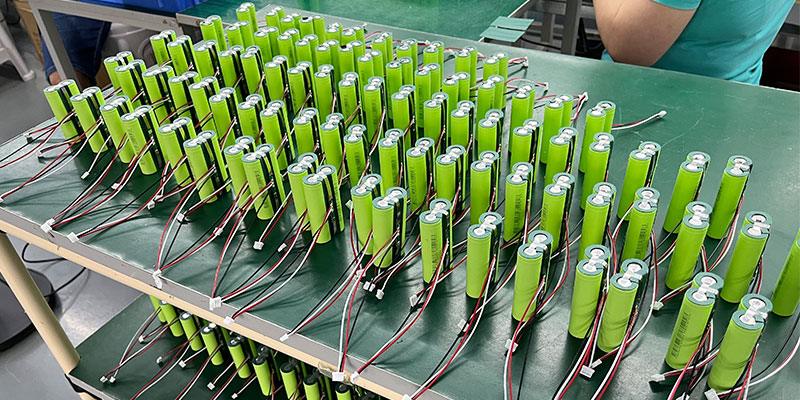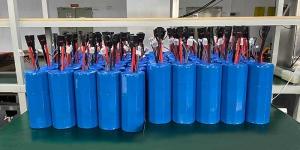Who invented LI-ION BATTERY
The Pioneers Behind Lithium-Ion Battery Technology
Lithium-ion batteries are ubiquitous in our modern world, powering everything from mobile phones and laptops to electric vehicles and renewable energy systems. But who exactly invented this revolutionary technology? Understanding the origins of lithium-ion batteries not only sheds light on their importance but also helps us appreciate the groundbreaking work of the inventors and the ongoing innovations that continue to enhance this essential technology.
The Invention of Lithium-Ion Batteries
The development of lithium-ion batteries can be credited to multiple inventors and several key milestones:
-
Early Developments:
-
In the 1970s, British chemist Stanley Whittingham, while working for Exxon, first began exploring lithium batteries. He created a battery made from titanium disulfide and lithium metal. However, these early versions were too unstable and posed a risk of explosion when exposed to air.
-
-
John B. Goodenough’s Contribution:
-
In 1980, John B. Goodenough, an American physicist and professor at the University of Texas, invented a more stable lithium battery using lithium cobalt oxide as the cathode material. This development significantly improved the battery’s capacity and stability, making it safer and more practical.
-
-
Akira Yoshino’s Commercialization:
-
In 1985, Akira Yoshino of Japan assembled a prototype lithium-ion battery using lithium cobalt oxide as the cathode and petroleum coke as an anode. This version was capable of repeated charging and discharging, which was safer and more durable. Yoshino’s work is considered pivotal in advancing the battery toward commercialization.
-
-
Commercial Introduction and Patent:
-
Based on these developments, the first commercially viable lithium-ion battery was released by Sony and Asahi Kasei in 1991. This launch marked the beginning of lithium-ion battery integration into consumer electronics, heralding a new era of portable electronic devices.
-
Significance of Lithium-Ion Batteries
Lithium-ion batteries revolutionized the world by providing safer, longer-lasting rechargeable batteries. Their high energy density, low maintenance requirements, and capability to handle numerous recharge cycles without significant degradation have made them integral to modern electronic devices and energy solutions.
Advancements by Himax Electronics
Himax Electronics has capitalized on the foundation laid by the inventors of lithium-ion technology to enhance the performance and safety features of these batteries:
-
Innovative Battery Management Systems:
-
Himax Electronics has developed sophisticated battery management systems that optimize charging processes and ensure longevity and safety. These systems monitor various parameters like temperature, voltage, and current, adjusting charging rates in real time to prevent overcharging and overheating.
-
-
Advancements in Materials and Efficiency:
-
Continuously innovating in the area of electrode materials and battery chemistry, Himax has contributed to increasing the energy density and efficiency of lithium-ion batteries. These advancements have facilitated the development of thinner, lighter batteries with faster charging capabilities and extended lifespans.
-
-
Commitment to Safety and Sustainability:
-
Understanding the origins and chemical nature of lithium-ion batteries, Himax invests heavily in research to mitigate the risks associated with battery technology. Their ongoing efforts to improve battery safety protocols and promote recycling technologies underscore their commitment to sustainability and consumer safety.
-
Absolutely, let’s continue exploring the current and future implications of lithium-ion battery technology and how ongoing innovations by companies like Himax Electronics are shaping the future of energy storage and consumption.
Future Directions in Lithium-Ion Battery Technology
As we move forward, the landscape of lithium-ion technology continues to evolve, driven by demands for higher efficiency, increased safety, and greater sustainability. The innovations spearheaded by pioneers in the field are being advanced further by companies like Himax Electronics, which are dedicated to pushing the boundaries of what these batteries can achieve.
Emerging Technologies and Innovations
-
Solid-State Batteries:
-
Next-Generation Materials: One of the most promising areas of development in lithium-ion technology is the shift toward solid-state batteries. These batteries replace the liquid electrolyte with a solid electrolyte, which can significantly enhance safety by removing flammable liquids from the battery’s architecture.
-
Improved Performance: Solid-state batteries are not only safer but also offer higher energy densities and the potential for faster charging speeds. Himax was conducting extensive research to overcome the current limitations and bring these batteries to market.
-
-
Enhanced Energy Density:
-
Advanced Cathode Materials: Continuing the work of John Goodenough, Himax is exploring new cathode materials that can store more lithium ions. This research is crucial for improving the energy density of batteries, which directly translates to longer battery life and smaller, lighter battery designs.
-
Anode Innovations: Beyond cathode improvements, Himax is also innovating in anode technology, including the use of silicon-based anodes, which have a much higher capacity for lithium compared to traditional graphite anodes.
-
Implications for Renewable Energy and Electric Vehicles
As lithium-ion batteries become more capable and less prone to risks, their role in renewable energy systems and electric vehicles becomes increasingly significant:
-
Renewable Energy Storage:
-
Grid Storage Solutions: Lithium-ion batteries are pivotal in managing the intermittency of renewable energy sources like solar and wind. Himax Electronics is working on solutions that integrate their batteries with renewable energy systems to provide reliable power grid storage solutions.
-
Home Energy Systems: Innovations by Himax are also making it possible for homeowners to efficiently store solar energy during the day and use it at night, increasing the practicality and appeal of home solar installations.
-
-
Electric Vehicles (EVs):
-
Extended Range and Reliability: Himax’s improvements in battery technology are crucial for the EV market, where range anxiety remains a significant barrier. By increasing energy density and enhancing charge speeds, Himax is helping to extend the driving range of EVs and reduce charging times, making them more appealing to consumers.
-
Safety Innovations: As EV adoption grows, the importance of battery safety becomes even more critical. Himax’s ongoing focus on safety innovations helps mitigate risks associated with battery failures in EVs, enhancing consumer confidence in this growing market.
-
Conclusion: Pioneering a Safer, More Efficient Future
The journey of lithium-ion battery(LI-ION BATTERY) technology, from its invention to its current status as a cornerstone of modern portable power, is a testament to the ingenuity and persistence of scientists and engineers across generations. Himax Electronics continues this tradition of innovation, driving advancements that promise to make lithium-ion batteries safer, more efficient, and more integral to our energy future.
Through their commitment to research and development, Himax is not only enhancing the performance of these batteries but also ensuring they play a pivotal role in a sustainable future, powering everything from the smallest gadgets to the largest grid storage systems. As we look ahead, the efforts of Himax Electronics will undoubtedly continue to influence how energy is stored and used, ensuring that lithium-ion batteries remain at the forefront of technological advancement.
For more insights into battery technology or to learn about Himax Electronics’ range of products and solutions, feel free to visit their website or contact their technical support team.





